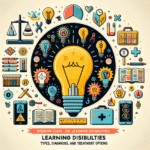
Introduction
In a world where data reigns supreme, understanding the relationships between variables is vital for informed decision-making. This is where correlational studies shine, revealing hidden patterns and connections that guide everything from business strategies to public policy. Imagine a manager analyzing how employee satisfaction correlates with productivity levels, or a healthcare professional examining the relationship between physical activity and mental well-being. These scenarios encapsulate the essence of Exploring Connections: How Correlational Studies Illuminate Relationships in Data. In this article, we will delve into the importance of correlational studies, the methods employed, and how they can provide invaluable insights across various fields.
The Fundamentals of Correlational Studies
What Are Correlational Studies?
Correlational studies explore the relationship between two or more variables, determining if and how they are associated. This type of study can reveal whether an increase in one variable corresponds with an increase or decrease in another. It’s crucial to understand that correlation does not imply causation. For example, a study may find that ice cream sales correlate with increased drowning incidents. While there is a relationship, one does not cause the other; rather, both are influenced by a third variable, such as warm weather.
Types of Correlation
Correlations are classified into three categories:
Positive Correlation: As one variable increases, the other variable also increases. For example, the amount of exercise correlates positively with overall health.
Negative Correlation: As one variable increases, the other variable decreases. A common example is the relationship between stress levels and quality of sleep.
- No Correlation: No significant relationship exists between the variables. For instance, shoe size and intelligence level generally display no correlation.
By Exploring Connections: How Correlational Studies Illuminate Relationships in Data, researchers and practitioners can gain deeper insights into these relationship dynamics.
The Importance of Correlational Studies
Providing Insights Across Various Fields
Correlational studies serve as foundational tools in numerous disciplines. In psychology, they help us understand the relationships between behaviors and traits. In marketing, they facilitate understanding consumer behavior—an essential aspect of effective advertising campaigns. Public health relies on correlational studies to identify risk factors for diseases, helping shape prevention strategies.
Case Study: Smoking and Lung Cancer
One of the most notable case studies is the correlation between smoking and lung cancer. Early research revealed a strong positive correlation between smoking rates and the incidence of lung cancer, prompting public health campaigns and policy changes. The study helped illustrate the potential consequences of smoking long before definitive causal relationships were established, showcasing the power of correlational studies in driving societal change.
Identifying Trends Over Time
Correlational studies can highlight trends that may not be immediately apparent, offering predictive insights. For instance, analyzing data over several years can uncover long-term trends related to climate change, economic shifts, or health crises.
Case Study: Economic Indicators
In economics, correlation between rising unemployment rates and declining consumer spending has been extensively studied. By examining these relationships over time, economists can predict recessions or recoveries, enabling policymakers to implement measures that mitigate negative impacts.
Methods of Conducting Correlational Studies
Data Collection Techniques
Correlational studies typically rely on various data collection methods:
- Surveys and Questionnaires: Collecting self-reported data on attitudes and behaviors.
- Observational Studies: Gathering data through direct observation without intervention.
- Secondary Data Analysis: Utilizing existing datasets to identify connections.
Statistical Tools
Researchers leverage statistical tools to analyze data and identify correlations. Common methods include Pearson’s correlation coefficient, Spearman’s rank correlation, and regression analysis. Each method quantifies the strength and direction of relationships between variables, allowing researchers to present their findings accurately.
Table: Comparison of Correlation Coefficients
| Coefficient | Description | Range |
|---|---|---|
| Pearson | Linear relationship | -1 to +1 |
| Spearman | Rank-based relationship | -1 to +1 |
| Kendall | Difference in ranks | -1 to +1 |
By utilizing various statistical methods, researchers can get a comprehensive view of relationships, further enhancing our understanding of data dynamics.
Ethical Considerations in Correlational Studies
Importance of Ethical Standards
When conducting correlational studies, ethical considerations are paramount, particularly when dealing with sensitive data involving human subjects. Researchers must ensure confidentiality, obtain informed consent, and avoid misleading interpretations.
Avoiding Misinterpretation
Misinterpretation is a significant risk in publishing correlational findings. It’s essential for researchers to clarify that correlation does not equate to causation. Misleading claims can result in misinformation and policy decisions that may harm public trust.
Case Study: The Dangers of Misinterpretation
A well-known example is the misinterpretation of the correlation between autism rates and vaccines. Some studies purported a connection due to correlational data, leading to significant public health ramifications. Disregarding scientific rigor and jumping to conclusions without establishing causation can lead to harmful misconceptions.
Limitations of Correlational Studies
The Lack of Causation
One of the most significant limitations of correlational studies is their inability to establish causation. While they can indicate relationships, they cannot determine whether one variable impacts another. As a result, researchers may need to pursue additional methodologies, such as experimental studies, for more conclusive evidence.
Confounding Variables
Correlational studies must also account for confounding variables—external factors that might influence the relationship between the studied variables. Failure to control for these can lead to erroneous conclusions.
Table: Examples of Confounding Variables
| Primary Variable | Correlational Variable | Potential Confounder |
|---|---|---|
| Education Level | Income | Socioeconomic Status |
| Physical Exercise | Mental Well-being | Sleep Patterns |
By acknowledging and mitigating the influence of confounding variables, researchers can enhance the credibility of their findings.
Real-World Applications of Correlational Studies
In Business and Marketing
Businesses frequently leverage correlational studies to identify customer preferences and behaviors. Analyzing buying trends alongside demographic data can help companies tailor their marketing strategies effectively.
Case Study: Consumer Behavior Analysis
A retail chain conducted a correlational study to examine how promotional discounts affected sales volume. The findings indicated a positive correlation between the percentage of discount offered and the increase in customer purchases, allowing the company to optimize future promotions based on proven strategies.
In Healthcare
In healthcare, correlational studies often uncover potential risk factors for various health conditions, guiding preventive measures and public health initiatives.
Case Study: Physical Activity and Mental Health
A recent correlational study exploring the relationship between physical activity and overall mental health found a strong positive correlation. Individuals who engaged in regular exercise reported higher levels of well-being and lower instances of anxiety and depression. These insights encouraged health professionals to advocate for exercise as a mental health intervention.
In Education
Education researchers utilize correlational studies to investigate relationships between teaching methodologies, student engagement, and academic success.
Case Study: Attendance and Academic Performance
A school district explored the correlation between student attendance rates and academic performance. The results revealed a robust positive correlation; students with higher attendance rates consistently achieved better grades. This study underscores the necessity of policies promoting student attendance for enhancing academic performance.
Conclusion
Exploring Connections: How Correlational Studies Illuminate Relationships in Data is a powerful tool for researchers across disciplines. By emphasizing the strengths and limitations of correlational studies, we gain insights into the complex web of relationships within our data. As demonstrated through case studies from various fields, correlational studies can guide decision-making, inform public policies, and drive societal changes.
In conclusion, harnessing the insights gained from correlational studies can lead to actionable strategies and improvements in our understanding of intricate data relationships. Whether you’re a business leader, healthcare professional, educator, or researcher, embracing the connections illuminated by correlational studies can guide meaningful progress in your field.
FAQs
1. What is the primary purpose of correlational studies?
Correlational studies aim to explore relationships between variables to identify patterns and trends without implying causation.
2. Are correlation coefficients definitive proof of a relationship?
No, correlation coefficients indicate the strength and direction of a relationship but do not establish causation.
3. Can correlational studies be used for making predictions?
Yes, correlational studies can identify trends that may aid in making predictions about future behavior or outcomes, though they must be interpreted cautiously.
4. How can confounding variables affect study results?
Confounding variables can obscure or distort the true relationship between the studied variables, leading to misleading conclusions if not controlled for.
5. What are examples of fields where correlational studies are particularly valuable?
Correlational studies are valuable in fields such as psychology, marketing, healthcare, and education, where they help identify significant relationships and patterns.
In conclusion, the study of correlations allows us to navigate the complex landscape of relationships found within our data, guiding us toward informed actions and decisions. Embrace the power of correlational studies and leverage these insights to enhance your understanding of data and its implications in the world around us.

















